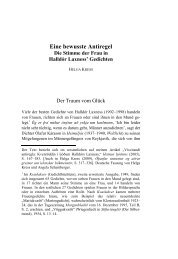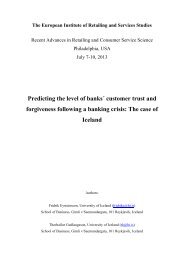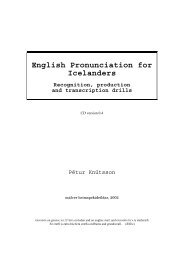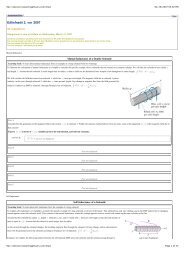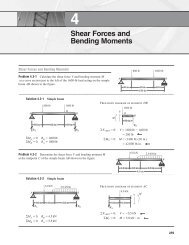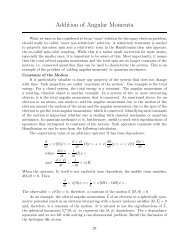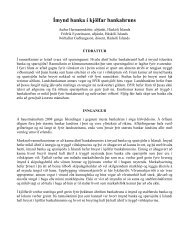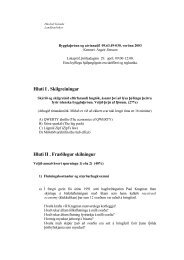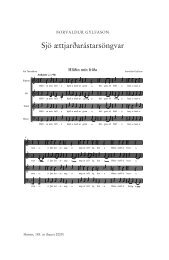The Hartree-Fock approximation underlies the most commonly used ...
The Hartree-Fock approximation underlies the most commonly used ...
The Hartree-Fock approximation underlies the most commonly used ...
You also want an ePaper? Increase the reach of your titles
YUMPU automatically turns print PDFs into web optimized ePapers that Google loves.
arises from <strong>the</strong> antisymmetrization of <strong>the</strong> wave function. It results from <strong>the</strong> exchange<br />
correlation. <strong>The</strong> energy of two electrons in orbitals ψ1 and ψ2 is<br />
if <strong>the</strong>ir spin is antiparallel, but<br />
E(↑↓) = h11 + h22 + J12<br />
E(↑↑) = h11 + h22 + J12 − K12<br />
if <strong>the</strong>ir spin is parallel. <strong>The</strong> energy is lower when <strong>the</strong> spin is parallel (K12 > 0) because<br />
<strong>the</strong> antisymmetrization prevents <strong>the</strong> electrons from being at <strong>the</strong> same location.<br />
In summary: Given a determinantal wave function, <strong>the</strong> energy can be obtained in<br />
<strong>the</strong> following way:<br />
(1) each electron in spatial orbital ψi contributes hii to <strong>the</strong> energy,<br />
(2) each unique pair of electrons contributes Jij (irrespective of spin),<br />
(3) each pair of electons with parallel spin contributes −Kij.<br />
Restricted <strong>Hartree</strong>-<strong>Fock</strong> equation<br />
Using <strong>the</strong> above expression for <strong>the</strong> energy, <strong>the</strong> <strong>Hartree</strong>-<strong>Fock</strong> equation becomes:<br />
f(1)ψj(1) = ǫjψj(1)<br />
where <strong>the</strong> <strong>Fock</strong> operator can now be expressed as:<br />
f(1) = h(1) +<br />
N/2<br />
<br />
a<br />
2Ja(1) − Ka(1)<br />
and <strong>the</strong> restricted Coulomb and exchange operators are:<br />
<br />
Ja(1) = dr2ψ ∗ a(r2) 1<br />
ψa(r2)<br />
and<br />
<br />
Ka(1)ψi(1) =<br />
<br />
r12<br />
dr2ψ ∗ 1<br />
a (r2)<br />
r12<br />
<strong>The</strong> total energy of <strong>the</strong> system can be written as:<br />
N/2 <br />
E = 2<br />
a<br />
N/2 <br />
= 2<br />
a<br />
(a|h|a) +<br />
haa + <br />
a<br />
N/2<br />
<br />
a<br />
<br />
b<br />
40<br />
N/2<br />
<br />
b<br />
<br />
ψi(r2) ψa(r1) .<br />
2(aa|bb) − (ab|ba)<br />
2Jab − Kab



